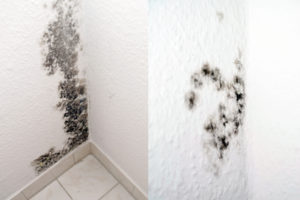Cellulose or Cellulove? What Mold Really Loves

What You Need to Know About Mold in Your Building
Mold is a common sight on rotting tree trunks, so how does it show up in your bathroom? Our Manhattan mold removal experts explain the conditions leading to mold growth and how you can prevent it.
How Does Mold Develop?
Microscopic mold spores surround us constantly, indoors and outdoors. For the most part, these airborne particles are harmless. Problems arise when spores begin to reproduce and colonize surfaces inside a home or building.
Mold spores settle harmlessly unless they come in contact with moisture, which is the key to growth. Drywall, cardboard, wood and other cellulose materials are preferred surfaces for mold, although it can also grow in upholstery, carpeting and fabrics.
Types of Mold
Penicillium, Cladosporium and Aspergillus are the most common forms of mold overall, while Alternia is the most common indoor mold. Extended exposure to all four types can cause allergic symptoms, even in people who haven’t previously been subject to allergies.
Stachybotrys chartarum is often referred to as black mold or toxic mold. This type of mold emits mycotoxins that can trigger a range of health problems, from headaches and nosebleeds to muscle aches and memory loss.
Experts recommend maintaining indoor humidity levels below 60 percent to discourage mold growth. During cold weather months, it’s important to keep the house warm to prevent condensation, which can lead to mold.
Trust Stern Mold for Effective Manhattan Mold Removal
Our two-step MoldExterm program thoroughly removes existing growth and prevents future infestations. Contact us for a free mold inspection.
